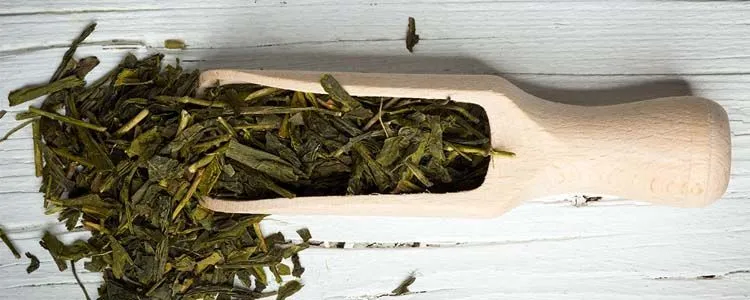Asian culture has always been related to the preparation of interesting teas and infusions. In this case, the bancha tea belongs entirely to Japanese culture, being the 2nd most drunk infusion of the Japanese country (after Shincha).
It is considered as a type of green tea and is recognized for its medicinal properties. It is a large supplier of ore, and specifically, iron (although it prevents the absorption of other forms of iron).
However, in Japan, within the different types of greens, the bancha is considered the lowest quality. It has a specific flavor, with an aroma reminiscent of straw. It has a specific preparation and we are going to tell you about it below throughout this article.
Table of Contents
Bancha tea: the tea to drink every day
The term Bancha (番茶) comes from the union of the words “everyday” or “common” and “cha” which means tea or infusion. Other derivations say that Ban comes from the term “late”, given that it is collected between the summer and autumn months. The season of shincha (the first harvest of Sencha), which depends on the region of the plantation, is from the beginning of April to the end of May,
Today we can find different modes of production of bancha, with differences found at each point where it is grown. These differences come from the leaf drying system and the fermentation process. In the latter cases, the process is more similar to how it is usually carried out in the Chinese country compared to the Japanese custom.
As we have mentioned, it is one of the most drunk in Japan, behind Sencha.
Other types of Japanese green tea
- Kukicha Tea
- Gyokuro Tea
- Matcha Tea
- Hojicha Tea
- Sencha Tea
- Tamaryokucha Tea
- Kabusecha Tea
How to prepare Bancha tea?
The traditional Japanese preparation of bancha tea involves a procedure where both time and temperature must be controlled very well.
To obtain the best results in its preparation, we must weigh 3 grams of bancha per cup. We heat the water to a temperature of 80 ºC. The infusion should be produced in a limited time between 1 minute and 30 s and 2 minutes.
The longer you are infusing in the hot water, the more bitter tones we will find in your tasting (as it happens with the traditional green tea)
Properties of Bancha tea

Since bancha is a type of green tea, most of the studies done have been linked to the same properties of its entire family.
This is a summary of what it offers us, although we will explain each of the points in detail.
- Antioxidant
- Helps lower cholesterol
- Prevents hypertension
- Regulates glucose levels
- Stimulant
- Reduces fluid retention
- Improves skin hydration
High concentration of antioxidants
Within bancha tea are a high concentration of antioxidant substances (polyphenols), catechins and vitamins. The fact of incorporating this type of substances in our body, allows to reduce the known free radicals, substances that degrade from other components and that act as oxidizing agents (and can be carcinogenic).
It is advisable to take vitamins and antioxidants in our diet, where fruits and vegetables offer very good concentrations of this type of compounds.
Neuroprotective effect
A compound known as theanine, present in each infusion of Bancha, has demonstrated in various scientific trials its ability to protect the neuronal activity of our brain.
These studies are in the early stage and have been tested in animals, but it is estimated that the response in humans will be very positive, opening an important range to reduce the potential effect of diseases related to Alzheimer’s and schizophrenia.
Helps control blood sugar levels
The University of Japan has worked in recent years to know the main properties of the drinks that its population usually drinks. The concentration of these antioxidants, such as theanine, helps control the secretion of insulin by the pancreas. These substances promote limiting the resistance of the hormone insulin.
In a study conducted by the University of Japan, the benefits have been analyzed of bancha tea to control diabetes, resulting in a 30% reduction in the risk of type 2 diabetes with the intake of 1 cup a day.
Where can I buy Bancha tea?
Some contraindications
This part is the one that nobody likes to see but that always is. Despite scientific studies, we must count on the fact that bancha tea provides theine and other components that may be sensitive to people who are previously sick or have food allergies.
Excessive consumption causes contraindications of a slight nature, but which can be the following:
- Digestive disorders: there have been clinical cases of irritable bowel syndrome, esophagitis, ulcers and gastritis. They are related to the content of caffeine and tannins, but only in high doses and not recommended in any case.
- Hypertension: related to its caffeine (theine) content.
- Hepatitis: in cases where an alcoholic extraction of the components of the bancha tea has been carried out, but not under a habitual consumption.
- Anxiety and insomnia: the process of absorption of any element rich in caffeine, depending on the sensitivity we have, can cause temporary processes of anxiety and insomnia.
- Hinders iron absorption: even though it contains trace elements such as iron, drinking bancha tea after main meals can reduce the absorption rate of this microelement.
- Hinders calcium absorption: for the same case, it favors the excrection of calcium and reduces its fixation when we take foods rich in this element.
- Pregnancy and lactation: it is not advisable to take this type of infusion during the process of pregnancy and lactation, as it could reduce the absorption of folic acid.
As you can see, the interaction of bancha tea with the minerals that other foods have makes it advisable to take it on an empty stomach or after the digestion of food.
